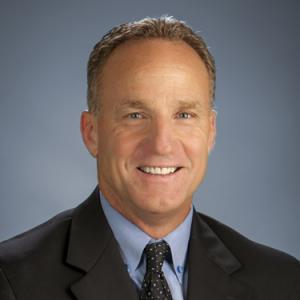Reverse Mortgage Retirement - 8 Steps down the Yellow Brick Retirement Road
Inch by Inch, it's a Cinch. Yard by Yard, it's Hard. The 8 steps to getting a reverse mortgage.
IRVINE, CA, UNITED STATES, December 1, 2020 /EINPresswire.com/ -- In the Wizard of Oz, Dorothy had a little help from her friends to get down the Yellow Brick Road to the Land of Oz. With Reverse Mortgages, you'll need some help, too. Instead of relying on Toto, the Scarecrow, the Tin Man, and the Lion, you'll need help from a Certified Reverse Mortgage Professional (CRMP) to guide you down these 8 steps. A CRMP is the highest designation that a reverse mortgage loan officer can obtain, but even a CRMP gets a little help, too. A CRMP has the fortune of having a great trade association (NRMLA) to provide excellent and timely information on how a reverse mortgage might, or might not, be suitable and appropriate for a senior homeowner. FHA approved counseling agencies are a huge help, too. Plus, software programs that make "running the numbers" easy to see and compare with a regular mortgage. Another huge help are educational videos on YouTube (www.ReverseTube.TV is popular).
Here are 8 steps down the Reverse Mortgage Yellow Brick Road to Retirement:
1. Learn, Read, get Educated about About Reverse Mortgages
This step is all about awareness and education This is where, at age 60 or older, and you own a home, you hear about reverse mortgages. You hear a Radio Ad, or watch a TV spot. This is the stage where you hear about the myths and realities of a reverse mortgage and start reading and asking questions.
2. Upfront Education
How do you begin to learn about a reverse mortgage? You contact a reverse mortgage professional (it doesn't have to be a CRMP designated expert, but it can't hurt to talk to the best of the best) at a lender who specializes in these loans. We recommend you contact a CRMP, or google around for a true pro.
3. Counseling
A reverse mortgage can give seniors a second lease on life. Counseling is required for all HECMs. This is really good news because it's an extra safety hedge of protection so that seniors learn all of the facts, and alternatives from a neutral 3rd party. Reverse mortgages need to be evaluated to make sure it's the right loan, for the right person, at the right time, and for the right reason.
4. Application/Fees/Disclosures
If you proceed with a reverse mortgage loan (yes, it's just a loan), then you select a lender. The person you will be dealing with is called a loan originator or reverse mortgage consultant. You need to establish a relationship with a professional who has integrity, character and who is all about one thing -- making sure the reverse mortgage is suitable and appropriate, based on YOUR needs.
5. Loan Processing
Once a reverse mortgage lender has your counseling certificate in hand, and the loan application registered, then the next step is "loan processing." Processing involves ordering the appraisal, opening title/escrow, getting the credit report run, checking the HOA and insurance and tax information related to the property. The income compared to the debts will determine the creditworthiness, and the property appraisal is critical for a final loan approval to be achieived.
6. Closing
Once the loan is approved (credit, income, assets, property value), then the final loan documents are prepared to be signed and notarized.
7. Disbursement
The homeowner has three business days after signing the papers to make sure the figures all add up and are what was disclosed during step 4 above.
These three days are known as the “Right of Rescission” period, and it gives the lender 3 days to set up the disbursements and do a final QC on the loan so that everything is on time, on schedule for disbursement and funding and paying off the old loan (if applicable).
8. The Post-Closing Step
After the loan closes, a loan “Servicer“ manages the account and is responsible for sending you a monthly statement, and for disbursing monthly payments to the homeowner (if this payment option is chosen), and advancing funds. It's a key step because "AFTER" the loan funds, the homeowner needs to check in with their CRMP or Reverse Mortgage Loan Officer to make sure the monthly statement is accurate and perfect.
Paul E. Scheper, President
Loangevity Mortgage
9496367242 ext.
email us here
Legal Disclaimer:
EIN Presswire provides this news content "as is" without warranty of any kind. We do not accept any responsibility or liability for the accuracy, content, images, videos, licenses, completeness, legality, or reliability of the information contained in this article. If you have any complaints or copyright issues related to this article, kindly contact the author above.



